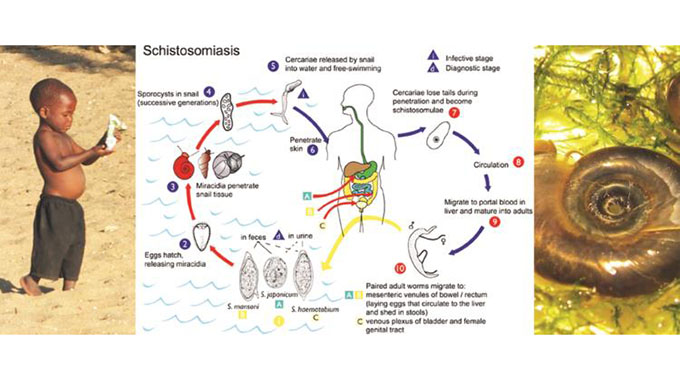JUST IN: Bilharzia risk goes down

Paidamoyo Chipunza Senior Health Reporter
Prevalence of bilharzia in Zimbabwe has gone down by almost 80 percent following six successive years of mass drug administration (MDA), the Ministry of Health and Child Care has revealed.
In an interview with The Herald following release of the national impact assessment survey of mass drug administration against bilharzia results, also known as schistosomiasis recently, National Institute of Health Research (NIHR) director Professor Nicholas Midzi said the national programme impacted positively in reducing the burden of bilharzia in the country.
Prof Midzi said before Government started the mass drug administration in 2010, prevalence of bilharzia stood at 23 percent. He said following six years of drug administration, which was targeting school pupils, prevalence dropped to 5 percent.
Similarly, Prof Midzi said, prevalence of soil-transmitted infections among children have also gone done by nearly 90 percent.
Before commencement of the campaign in 2010, prevalence of these infections stood at 5,5 percent and following six years of mass drug administration, soil transmitted infections went down to 0,7 percent, thereby marking an 83,7 percent reduction.
Soil transmitted infections also known as soil transmitted helminth are worms that normally affect poorest and deprived communities. Most common species are ringworms, hookworms and whipworm.











Comments